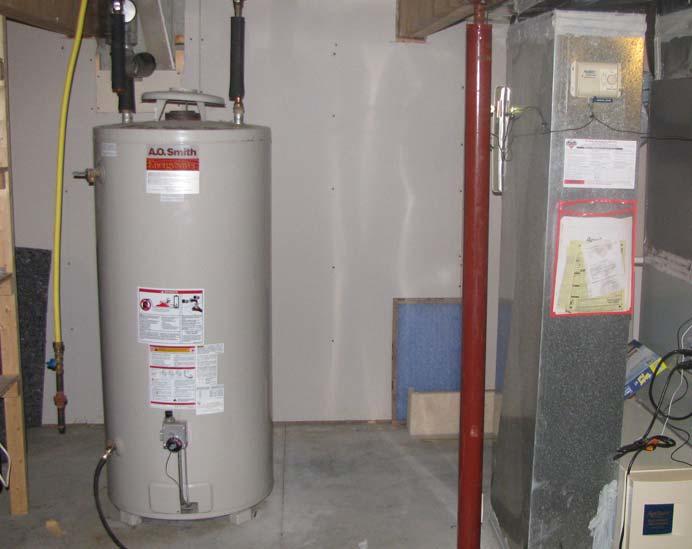We've found the article pertaining to How to Maintain a Hot Water Heater in a Few Simple Steps directly below on the web and thought it made sense to quickly share it with you over here.

Hot water is necessary for day-to-day convenience, whether it's for a revitalizing shower or washing meals. To guarantee your hot water system runs effectively and lasts much longer, routine upkeep is crucial. This short article gives sensible ideas and insights on how to maintain your home's hot water system to prevent disruptions and pricey fixings.
Intro
Keeping your home's hot water system might appear complicated, but with a couple of basic steps, you can guarantee it runs smoothly for several years to come. This guide covers everything from comprehending your warm water system to DIY maintenance ideas and knowing when to hire specialist aid.
Significance of Maintaining Your Warm Water System
Routine upkeep not only extends the life-span of your hot water system however additionally ensures it operates effectively. Overlooking upkeep can bring about decreased performance, greater power costs, and even premature failing of the system.
Signs Your Warm Water System Needs Upkeep
Knowing when your warm water system needs attention can prevent significant concerns. Look out for signs such as inconsistent water temperature, odd sounds from the heating unit, or rustic water.
Purging the Water Heater
Flushing your hot water heater removes debris buildup, improving performance and extending its life.
Checking and Replacing Anode Rods
Anode rods stop rust inside the container. Inspecting and replacing them when worn out is vital.
Facility Issues Requiring Professional Help
Examples consist of major leaks, electric problems, or if your hot water heater is continually underperforming.
Routine Professional Upkeep Perks
Professional upkeep can include comprehensive evaluations, tune-ups, and making certain conformity with security requirements.
Examining and Adjusting Temperature Setups
Readjusting the temperature setups guarantees optimal performance and safety.
Do It Yourself Tips for Maintenance
You can perform several upkeep jobs on your own to keep your hot water system in leading problem.
Checking for Leaks
Regularly evaluate pipelines and links for leaks, as these can cause water damages and higher bills.
Understanding Your Hot Water System
Before diving into maintenance jobs, it's helpful to recognize the basic parts of your warm water system. Usually, this includes the water heater itself, pipelines, anode poles, and temperature level controls.
Regular Monthly Maintenance Tasks
Normal month-to-month checks can assist catch minor issues prior to they escalate.
Examining Pressure Alleviation Valves
Checking the stress relief valve guarantees it operates correctly and stops extreme stress accumulation.
Protecting Pipelines
Insulating warm water pipes lowers warm loss and can save energy.
When to Call a Specialist
While DIY upkeep is useful, some issues call for specialist know-how.
Conclusion
Routine maintenance of your home's warm water system is vital for performance, durability, and price financial savings. By complying with these suggestions and knowing when to look for specialist help, you can ensure a trusted supply of hot water without unforeseen interruptions.
Water Heater Maintenance Tips
Test the TPR Valve
- Shut off the power and the cold-water supply valve.
- Place a bucket under the pipe connected to the temperature-pressure-release (TPR) valve on the top or side of the tank. (This valve opens if the tank pressure gets too high.)
- Lift the valve’s tab to let some water out, then let go. If water keeps flowing, drain the tank partway, unscrew the old valve with a pipe wrench, and install a new one.
Check the Anode Rod
- Put a hose to the tank’s drain cock and let out a few gallons of water.
- Now fit a 1 1/16-inch socket onto the rod’s hex head on top of the heater (or under its top plate) and unscrew the rod. If it’s less than ½ inch thick or coated with calcium, buy a new one, wrap its threads with Teflon tape, put it back in the tank, and tighten securely. Use this segmented rod if headroom above the tank is limited.
Drain the Tank and Wash Out Sediment
- Drain the remaining water in the tank into the bucket, then stir up the sediment on the tank’s bottom by briefly opening the cold-water supply valve. Drain and repeat until clean water comes out of the hose.
- Close the drain cock, refill the tank, and turn its power back on.
Adjust the Temperature
- Find the temperature dial on the side of the tank and unscrew its cover. Adjust the dial to 120 degrees using a flathead screwdriver. For every 10 degrees the temperature is lowered, you can expect to save up to 5 percent in energy costs.
- Turn the water heater off or the thermostat down to its lowest setting if you plan to be away from home for more than three days.
Insulate the Pipes
- Buy some self-sticking 3/8-inch-thick foam pipe insulation that matches the pipes’ diameter.
- Slide the foam over the hot-and cold-water pipes as far as you can reach. Insulating the cold-water pipe prevents condensation in summer.
- Peel the tape and squeeze the insulation closed. If the pipe is 6 inches or less from the flue, cover it with 1-inch-thick unfaced fiberglass pipe wrap.
https://www.thisoldhouse.com/plumbing/21016402/how-to-maintain-a-water-heater

I came across that page about Tips on Maintaining a Water Heater when looking around the web. In case you appreciated our blog post please remember to pass it around. I appreciate your readership.
View
Comments on “Ensuring Longevity of Your Home's Hot Water System: Maintenance Tips”